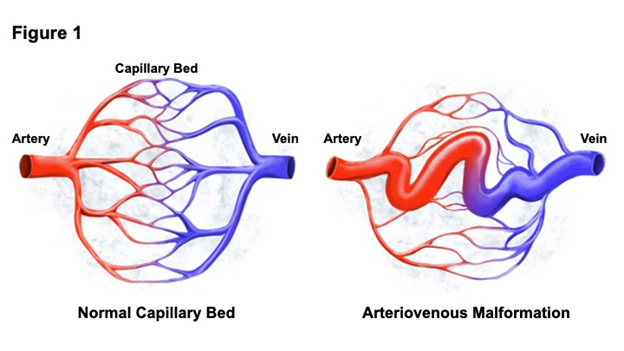FAQ's for participants about our Vascular Malformation, PIK3CA/PROS, and KRAS disorders research
Note: There may be medical and science jargon here. We do this for the doctors and researchers who read this website. If you have questions about any of this information, contact Annika Gillam at aegillam@ucdavis.edu.
We are both a basic and translational science laboratory. This means our lab studies genes, gene products, and cells on a molecular level and then studies how our molecular findings cause human disease. To involve patient samples in research, we recruit study subjects from among our clinical patients with vascular disease. Patient samples are crucial to learning more about conditions.
We study conditions that cause vascular malformations, including hereditary hemorrhagic telangiectasia (HHT), PIK3CA-Related Overgrowth Spectrum (PROS) disorders, KRAS-related vascular malformations, and more.
We study these conditions in cells in culture and in mouse models, but are also are interested in biological samples from patients with vascular malformations. Those who have had negative/inconclusive genetic testing may still be included.
Our lab aims to learn more about these genetic conditions and how they are impacting the cells at a microscopic, molecular level. This includes how these conditions affect signaling pathways within the cells. (A signaling pathway is the way the body communicates with cells in different organs to make the body function.)
Some specific long-term goals include:
- Better understanding the BMP9, PIK3CA, and KRAS signaling pathways
- Identifying modifier gene or modifier mutations in other genes (NOT in PIK3CA or other genes that currently known to cause vascular malformation conditions)
- Exploring how different genes and molecules affect the signaling pathways in various vascular malformation conditions
***A vascular malformation is where a portion of blood vessels in the body haven't developed properly.
***This can happen in arteries, veins, or capillaries, or in lymphatic vessels.
The picture below is an example of one type of vascular malformation, called an "arteriovenous malformation."

"PROS" stands for "PIK3CA-Related Overgrowth Spectrum" disorders. PROS disorders are a group of conditions caused by pathogenic genetic variants in the PIK3CA gene.
People with a PROS disorder can have a variety of clinical findings, such as: overgrowth in certain organs or limbs; malformations in vessels like capillaries, veins, arteries, and/or lymphatic vessels; hydrocephalus, intellectual disability, or seizures.
Right now, there is no way to predict which patients may have worse disease than others and who are more likely to hemorrhage. There are also very few therapies for patients with vascular disease. These discoveries could lead to better understanding of vascular malformation conditions, practical and inexpensive screening options, and identification of targets for therapies (medications).
Currently, we are interested in samples from people with vascular malformations, PROS, and KRAS-related disease. We may also be interested in samples from unaffected relatives, such as parents or siblings. Samples from unaffected family members would be used as "controls" in our studies.
Currently, we ask for a cheek swab, saliva, and/or blood sample.
We will also ask for skin biopsies, however this is not required to participate.
If you have a surgery planned, or previously had a biopsy, we may also request a sample from that affected tissue/organ.
Participating in research and providing research samples is completely optional. When you go through your consent visit, we will discuss risks and benefits in more detail, and answer any questions you may have.
We may ask to collect a cheek swab, saliva, or blood sample. This is so we can sequence potential modifier genes, and identify any mutations or "single nucleotide polymorphisms" (SNPs) that could be impacting a cell's function.
Skin biopsies allow us to grow fibroblast cell lines in the lab, and further study gene and protein expression, signaling pathways, and otherwise better understand other molecular factors on cell function in vascular malformation conditions.
We may want to collect a skin biopsy from "unaffected" area (areas without vascular difference or overgrowth), and a skin biopsy from "affected" skin. This is helpful for looking at tissue-specific changes.
Sometimes, people may have vascular malformations or overgrowth within their organs. If your doctor is already planning a procedure on an affected organ or tissue, we may want to use a small piece for research.
Having these samples is helpful for looking at tissue-specific changes in the cells. There may be changes in signaling, expression or otherwise in those cells, versus cells from cheek or blood.
That's great! We're happy to see another curious mind. Feel free to address any additional questions to our research genetic counselor, Annika Gillam, at aegillam@ucdavis.edu.